- Pioneer Machinery Source
- NTN BEARINGS JAPAN TIMKEN BEARING DEEP GROOVE BALL BEARINGS
- Home
- Stock Categories
- NTN BEARINGS JAPAN
- TIMKEN BEARING
- DEEP GROOVE BALL BEARINGS
- TAPERED ROLLER BEARINGS SIZE CHART
- TIMKEN BEARING
- HOUSED UNIT BEARINGS
- NEEDLE ROLLER THRUST BEARING
- TAPERED ROLLER THRUST BEARINGS
- BALL SCREW SUPPORT UNITS
- OIL MACHINERY BEARINGS
- SLEWING BEARING
- NTN BEARINGS JAPAN
- LEIBHERR PUMP AND MOTOR PARTS
- KOBELCO
- TRACK VOLVO
- WATER PUMP BEARING
- ROLLING MILL BEARING
- AUTOMOTIVE BEARINGS
- CLUTCH BEARING
- COAL WINNING MACHINE BEARING
- OIL BEARING
- MUD PUMP BEARINGS
- CROSS ROLLER BEARING
- TANDEM THRUST BEARING
- FAG BEARINGS SINGAPORE
- SKF BEARINGS
- OILFIELD MUD PUMP BEARINGS
- BEARING DISTRIBUTOR NTN
- BEARING CATALOG
- BEARING CATALOG ONLINE
- BEARING ONLINE
- BALL BEARINGS ONLINE
- CYLINDRICAL ROLLER BEARINGS
- SELF ALIGNING BALL BEARINGS
- CYLINDRICAL ROLLER BEARING
- CYLINDRICAL ROLLER BEARINGS DISTRIBUTIOR
- CYLINDRICAL ROLLER BEARINGS
- SPHERICAL ROLLER BEARINGS
- NEEDLE ROLLER BEARING
- NEEDLE ROLLER BEARING
- CONTACT ANGULAR BALL BEARINGS
- ANGULAR CONTACT BALL BEARINGS
- TAPERED ROLLER BEARINGS
- TAPERED ROLLER BEARINGS
- THRUST BALL BEARINGS
- THRUST ROLLER BEARINGS
- PLAIN BUSHINGS
- PLAIN BEARING
- COMPLEX BEARINGS
- BEARING UNITS
- LINEAR BEARINGS
- MULTI-ROW ROLLER BEARINGS NTN
- FOUR ROW CYLINDRICAL ROLLER BEARINGS NTN
- SL TYPE CYLINDRICAL ROLLER BEARINGS FOR SHEAVES NTN
- SINGLE ROW TAPERED ROLLER BEARINGS NTN
- DOUBLE ROW TAPERED ROLLER BEARINGS NTN
- FOUR ROW TAPERED ROLLER BEARINGS NTN
- SPHERICAL ROLLER BEARINGS NTN
- THRUST BEARINGS NTN
- BEARINGS FOR SPECIAL APPLICATIONS NTN
- DOUBLE ROW CYLINDRICAL ROLLER BEARINGS NSK
- SINGLE ROW TAPERED ROLLER BEARINGS NSK
- DOUBLE ROW TAPERED ROLLER BEARINGS NSK
- SPHERICAL ROLLER BEARINGS NSK
- SINGLE DIRECTION THRUST BALL BEARINGS NSK
- CYLINDRICAL ROLLER THRUST BEARINGS NSK
- TAPERED ROLLER THRUST BEARINGS NSK
- SPHERICAL THRUST ROLLER BEARINGS NSK
- ROLLING BEARINGS FOR STEEL MILLS NSK
- SEALED CLEAN FOUR ROW TAPERED ROLLER BEARINGS NSK
- FOUR ROW CYLINDRICAL ROLLER BEARINGS NSK
- DOUBLE ROW TAPERED ROLLER BEARINGS NSK
- ROLL BEARINGS FOR MILLS NSK
- CROSSED ROLLER BEARINGS NSK
- BALL BEARINGS NSK
- TAPERED ROLLER THRUST BEARINGS FOR ADJUSTING SCREWS NSK
- ROLLER BEARINGS NSK
- THIN SECTION BEARINGS KAYDON
- DOUBLE ROW DOUBLE ROW TAPERED ROLLER BEARINGS INCH SERIES
- DOUBLE DIRECTION THRUST TAPERED ROLLER BEARINGS
- FULL COMPLEMENT TAPERED ROLLER THRUST BEARING
- THRUST CYLINDRICAL ROLLER BEARINGS
- THRUST SPHERICAL ROLLER BEARINGS
- SEALED FOUR ROW TAPERED ROLLER BEARINGS
- FOUR ROW TAPERED ROLLER BEARINGS
- DOUBLE OUTER DOUBLE ROW TAPERED ROLLER BEARINGS
- TDO DOUBLE ROW TAPERED ROLLER BEARINGS
- SINGLE ROW TAPERED ROLLER BEARINGS INCH
- DOUBLE INNER DOUBLE ROW TAPERED ROLLER BEARINGS TDI
- SINGLE ROW TAPERED ROLLER BEARINGS
- DOUBLE INNER DOUBLE ROW TAPERED ROLLER BEARINGS INCH
- SPLIT SPHERICAL ROLLER BEARINGS
- SPHERICAL ROLLER BEARING
- FOUR ROW CYLINDRICAL ROLLER BEARINGS
- SINGLE ROW CYLINDRICAL ROLLER BEARINGS
- FULL ROW OF CYLINDRICAL ROLLER BEARINGS
- DOUBLE ROW CYLINDRICAL ROLLER BEARINGS
- DOUBLE ROW FULL COMPLEMENT CYLINDRICAL ROLLER BEARINGS
- FOUR POINT CONTACT BALL BEARINGS
- DOUBLE ROW ANGULAR CONTACT BALL BEARINGS
- DEEP GROOVE BALL BEARINGS
- ANGULAR CONTACT THRUST BALL BEARINGS TYPE TVL
- DTVL ANGULAR CONTACT THRUST BALL BEARING
- TP THRUST CYLINDRICAL ROLLER BEARING
- TPS THRUST CYLINDRICAL ROLLER BEARING
- THRUST SPHERICAL ROLLER BEARINGS TYPES TSR EJ TSR EM
- TTHD THRUST TAPERED ROLLER BEARINGS
- TTHDFL thrust tapered roller bearing
- TTHDFLSA THRUST TAPERED ROLLER BEARINGS
- THRUST TAPERED ROLLER BEARINGS TYPES TTSP, TTSPS AND TTSPL
- THRUST TAPERED ROLLER BEARINGS TYPES TTC TTCS AND TTCL
- SCREWDOWN BEARINGS TYPES TTHDSX SV AND TTHDFLSX SV
- THRUST TAPERED ROLLER BEARING TYPES TTDWK TTDFLK
- CROSSED ROLLER BEARINGS TXR
- TAPERED ROLLER BEARINGS DOUBLEROW TYPE TDO
- TAPERED ROLLER BEARINGS DOUBLE ROW TDI TDIT
- TAPERED ROLLER BEARINGS DOUBLE ROW TNA
- TAPERED ROLLER BEARINGS DOUBLE ROW TNASWE
- TAPERED ROLLER BEARINGS DOUBLE ROW SPACER ASSEMBLIES
- TTVS TTSP TTC TTCS TTCL TAPERED ROLLER THRUST BEARINGS
- HEAVY DUTY SHAKER SCREEN SPHERICAL ROLLER BEARINGS
- TIMKEN SPHERICAL ROLLER BEARINGS
- CYLINDRICAL ROLLER BEARINGS ONE ROW METRIC ISO SERIES
- CYLINDRICAL ROLLER BEARINGS ONE ROW STANDARD SERIES
- CYLINDRICAL ROLLER BEARINGS FULL COMPLEMENT NCF
- CYLINDRICAL ROLLER BEARINGS TWO ROW
- FOUR ROW CYLINDRICAL ROLLER BEARINGS
- CYLINDRICAL ROLLER BEARINGS HJ SERIES
- CYLINDRICAL ROLLER BEARINGS 5200 A5200 METRIC SERIES
- FOUR ROW CYLINDRICAL ROLLER BEARING ASSEMBLY
- FOUR ROW CYLINDRICAL ROLLER BEARING INNER RING OUTER ASSEMBLY
- FOUR ROW TAPERED ROLLER BEARINGS TQOW 2TDIW
- TIMKEN SEALED ROLL NECK BEARINGS
- FOUR ROW TAPERED ROLLER BEARINGS TQITS
- TNASWH TWO ROW TAPERED ROLLER BEARINGS
- TDIT TNAT TWO ROW TAPERED ROLLER BEARINGS
- TDIK THRUST TAPERED ROLLER BEARINGS
- TTDFLK TTDW AND TTDK BEARINGS
- SCREWDOWN SYSTEMS THRUST TAPERED ROLLER BEARINGS
- MUD PUMP BEARINGS
- THRUST SPHERICAL ROLLER BEARING
- TOKYO KEIKI PISTON PUMP
- TOKYO KEIKI VANE PUMP
- YUKEN VANE PUMP
- DAIKIN PISTON PUMP
- DAIKIN ROTOR PUMP
- VICKERS PISTON PUMP
- VICKERS VANE PUMP
- VICKERS GEAR PUMP
- NACHI GEAR PUMP
- NACHI PISTON PUMP
- REXROTH A1VO
- REXROTH A10VSO
- REXROTH AA4VSO
- REXROTH A15VSO
- REXROTH AZPF
- PARKER PV PISTON PUMP
- PARKER PVP PISTON PUMP
- PARKER PAVC PISTON PUMP
- PARKER VANE PUMP
- Main pump
- Technical Articles
- NTN BEARINGS JAPAN
- TIMKEN BEARING
- DEEP GROOVE BALL BEARINGS

Home> Technical Articles> Proper use of SKF grease
- Product Groups
NTN BEARINGS JAPAN
(13506)TIMKEN BEARING
(1832)DEEP GROOVE BALL BEARINGS
(1025)TAPERED ROLLER BEARINGS SIZE CHART
(779)TIMKEN BEARING
(2614)HOUSED UNIT BEARINGS
(188)NEEDLE ROLLER THRUST BEARING
(666)TAPERED ROLLER THRUST BEARINGS
(1296)BALL SCREW SUPPORT UNITS
(320)OIL MACHINERY BEARINGS
(6664)SLEWING BEARING
(5655)NTN BEARINGS JAPAN
(6092)LEIBHERR PUMP AND MOTOR PARTS
(3528)KOBELCO
(2792)TRACK VOLVO
(1238)WATER PUMP BEARING
(8633)ROLLING MILL BEARING
(19774)AUTOMOTIVE BEARINGS
(6444)CLUTCH BEARING
(20457)COAL WINNING MACHINE BEARING
(34515)OIL BEARING
(387)MUD PUMP BEARINGS
(19594)CROSS ROLLER BEARING
(6415)TANDEM THRUST BEARING
(4460)FAG BEARINGS SINGAPORE
(12395)SKF BEARINGS
(12772)OILFIELD MUD PUMP BEARINGS
(1257)BEARING DISTRIBUTOR NTN
(141)BEARING CATALOG
(7985)BEARING CATALOG ONLINE
(7993)BEARING ONLINE
(7766)BALL BEARINGS ONLINE
(7834)CYLINDRICAL ROLLER BEARINGS
(7977)SELF ALIGNING BALL BEARINGS
(3148)CYLINDRICAL ROLLER BEARING
(7998)CYLINDRICAL ROLLER BEARINGS DISTRIBUTIOR
(7991)CYLINDRICAL ROLLER BEARINGS
(3404)SPHERICAL ROLLER BEARINGS
(7996)NEEDLE ROLLER BEARING
(7989)NEEDLE ROLLER BEARING
(5538)CONTACT ANGULAR BALL BEARINGS
(7959)ANGULAR CONTACT BALL BEARINGS
(8967)TAPERED ROLLER BEARINGS
(7996)TAPERED ROLLER BEARINGS
(7995)THRUST BALL BEARINGS
(8183)THRUST ROLLER BEARINGS
(4527)PLAIN BUSHINGS
(7995)PLAIN BEARING
(3278)COMPLEX BEARINGS
(1036)BEARING UNITS
(9717)LINEAR BEARINGS
(2379)MULTI-ROW ROLLER BEARINGS NTN
(232)FOUR ROW CYLINDRICAL ROLLER BEARINGS NTN
(217)SL TYPE CYLINDRICAL ROLLER BEARINGS FOR SHEAVES NTN
(23)SINGLE ROW TAPERED ROLLER BEARINGS NTN
(256)DOUBLE ROW TAPERED ROLLER BEARINGS NTN
(720)FOUR ROW TAPERED ROLLER BEARINGS NTN
(308)SPHERICAL ROLLER BEARINGS NTN
(639)THRUST BEARINGS NTN
(279)BEARINGS FOR SPECIAL APPLICATIONS NTN
(182)DOUBLE ROW CYLINDRICAL ROLLER BEARINGS NSK
(297)SINGLE ROW TAPERED ROLLER BEARINGS NSK
(713)DOUBLE ROW TAPERED ROLLER BEARINGS NSK
(1035)SPHERICAL ROLLER BEARINGS NSK
(538)SINGLE DIRECTION THRUST BALL BEARINGS NSK
(99)CYLINDRICAL ROLLER THRUST BEARINGS NSK
(45)TAPERED ROLLER THRUST BEARINGS NSK
(50)SPHERICAL THRUST ROLLER BEARINGS NSK
(89)ROLLING BEARINGS FOR STEEL MILLS NSK
(526)SEALED CLEAN FOUR ROW TAPERED ROLLER BEARINGS NSK
(76)FOUR ROW CYLINDRICAL ROLLER BEARINGS NSK
(187)DOUBLE ROW TAPERED ROLLER BEARINGS NSK
(110)ROLL BEARINGS FOR MILLS NSK
(55)CROSSED ROLLER BEARINGS NSK
(40)BALL BEARINGS NSK
(233)TAPERED ROLLER THRUST BEARINGS FOR ADJUSTING SCREWS NSK
(46)ROLLER BEARINGS NSK
(68)THIN SECTION BEARINGS KAYDON
(1729)DOUBLE ROW DOUBLE ROW TAPERED ROLLER BEARINGS INCH SERIES
(371)DOUBLE DIRECTION THRUST TAPERED ROLLER BEARINGS
(133)FULL COMPLEMENT TAPERED ROLLER THRUST BEARING
(36)THRUST CYLINDRICAL ROLLER BEARINGS
(301)THRUST SPHERICAL ROLLER BEARINGS
(115)SEALED FOUR ROW TAPERED ROLLER BEARINGS
(61)FOUR ROW TAPERED ROLLER BEARINGS
(647)DOUBLE OUTER DOUBLE ROW TAPERED ROLLER BEARINGS
(250)TDO DOUBLE ROW TAPERED ROLLER BEARINGS
(368)SINGLE ROW TAPERED ROLLER BEARINGS INCH
(961)DOUBLE INNER DOUBLE ROW TAPERED ROLLER BEARINGS TDI
(561)SINGLE ROW TAPERED ROLLER BEARINGS
(137)DOUBLE INNER DOUBLE ROW TAPERED ROLLER BEARINGS INCH
(497)SPLIT SPHERICAL ROLLER BEARINGS
(30)SPHERICAL ROLLER BEARING
(459)FOUR ROW CYLINDRICAL ROLLER BEARINGS
(974)SINGLE ROW CYLINDRICAL ROLLER BEARINGS
(394)FULL ROW OF CYLINDRICAL ROLLER BEARINGS
(150)DOUBLE ROW CYLINDRICAL ROLLER BEARINGS
(578)DOUBLE ROW FULL COMPLEMENT CYLINDRICAL ROLLER BEARINGS
(162)FOUR POINT CONTACT BALL BEARINGS
(176)DOUBLE ROW ANGULAR CONTACT BALL BEARINGS
(99)DEEP GROOVE BALL BEARINGS
(226)ANGULAR CONTACT THRUST BALL BEARINGS TYPE TVL
(27)DTVL ANGULAR CONTACT THRUST BALL BEARING
(15)TP THRUST CYLINDRICAL ROLLER BEARING
(74)TPS THRUST CYLINDRICAL ROLLER BEARING
(40)THRUST SPHERICAL ROLLER BEARINGS TYPES TSR EJ TSR EM
(76)TTHD THRUST TAPERED ROLLER BEARINGS
(69)TTHDFL thrust tapered roller bearing
(65)TTHDFLSA THRUST TAPERED ROLLER BEARINGS
(13)THRUST TAPERED ROLLER BEARINGS TYPES TTSP, TTSPS AND TTSPL
(38)THRUST TAPERED ROLLER BEARINGS TYPES TTC TTCS AND TTCL
(46)SCREWDOWN BEARINGS TYPES TTHDSX SV AND TTHDFLSX SV
(95)THRUST TAPERED ROLLER BEARING TYPES TTDWK TTDFLK
(45)CROSSED ROLLER BEARINGS TXR
(12)TAPERED ROLLER BEARINGS DOUBLEROW TYPE TDO
(831)TAPERED ROLLER BEARINGS DOUBLE ROW TDI TDIT
(294)TAPERED ROLLER BEARINGS DOUBLE ROW TNA
(85)TAPERED ROLLER BEARINGS DOUBLE ROW TNASWE
(26)TAPERED ROLLER BEARINGS DOUBLE ROW SPACER ASSEMBLIES
(952)TTVS TTSP TTC TTCS TTCL TAPERED ROLLER THRUST BEARINGS
(141)HEAVY DUTY SHAKER SCREEN SPHERICAL ROLLER BEARINGS
(179)TIMKEN SPHERICAL ROLLER BEARINGS
(467)CYLINDRICAL ROLLER BEARINGS ONE ROW METRIC ISO SERIES
(197)CYLINDRICAL ROLLER BEARINGS ONE ROW STANDARD SERIES
(80)CYLINDRICAL ROLLER BEARINGS FULL COMPLEMENT NCF
(38)CYLINDRICAL ROLLER BEARINGS TWO ROW
(96)FOUR ROW CYLINDRICAL ROLLER BEARINGS
(164)CYLINDRICAL ROLLER BEARINGS HJ SERIES
(96)CYLINDRICAL ROLLER BEARINGS 5200 A5200 METRIC SERIES
(14)FOUR ROW CYLINDRICAL ROLLER BEARING ASSEMBLY
(40)FOUR ROW CYLINDRICAL ROLLER BEARING INNER RING OUTER ASSEMBLY
(130)FOUR ROW TAPERED ROLLER BEARINGS TQOW 2TDIW
(516)TIMKEN SEALED ROLL NECK BEARINGS
(188)FOUR ROW TAPERED ROLLER BEARINGS TQITS
(43)TNASWH TWO ROW TAPERED ROLLER BEARINGS
(17)TDIT TNAT TWO ROW TAPERED ROLLER BEARINGS
(69)TDIK THRUST TAPERED ROLLER BEARINGS
(78)TTDFLK TTDW AND TTDK BEARINGS
(45)SCREWDOWN SYSTEMS THRUST TAPERED ROLLER BEARINGS
(95)MUD PUMP BEARINGS
(625)THRUST SPHERICAL ROLLER BEARING
(67)TOKYO KEIKI PISTON PUMP
(219)TOKYO KEIKI VANE PUMP
(641)YUKEN VANE PUMP
(337)DAIKIN PISTON PUMP
(601)DAIKIN ROTOR PUMP
(151)VICKERS PISTON PUMP
(586)VICKERS VANE PUMP
(79)VICKERS GEAR PUMP
(25)NACHI GEAR PUMP
(101)NACHI PISTON PUMP
(339)REXROTH A1VO
(20)REXROTH A10VSO
(236)REXROTH AA4VSO
(41)REXROTH A15VSO
(22)REXROTH AZPF
(51)PARKER PV PISTON PUMP
(2691)PARKER PVP PISTON PUMP
(121)PARKER PAVC PISTON PUMP
(344)PARKER VANE PUMP
(37)Main pump
(1266)
- Address13 Tuas Road Distributor Service Singapore 638512
- Factory Address13 Tuas Distributor Service Road Singapore 638512
- Worktime7:00AM - 6:00PM
- Phone(Working Time)0065 82577418
- Phone(Nonworking Time)0065 82577418
- Fax0065 82577552
Proper use of grease requires knowledge of the movement of the grease in the SKF bearing to ensure the stability of the grease. The movement of the grease filled in the rolling bearing, with the rotation of the SKF bearing
turning can be roughly divided into two stages. In general, the amount of grease in the SKF bearing always exceeds the actual amount of lubrication directly involved in the lubrication.
The grease is distributed in the cage and in the cavity of the bearing cover and forms a contour on the periphery of the rolling elements. During this process, the bearing temperature rises rapidly due to the resistance of the excess grease. Although mostly the remaining grease is squeezed out at the beginning of the run, and the grease that is squeezed into the raceway attachment may still be brought between the raceways by the rolling element. In the early stages of bearing use,Most of the grease is squeezed out of the raceway very quickly (less than a minute), and the accumulated grease is discharged a small amount while circulating along with the bearing rotor.
At this time, the bearing temperature continues to rise until the excess grease is completely discharged, which can be called the running phase of the grease, according to the bearing.
Factors such as the quality of the grease, the amount of filling, etc., may last for ten minutes or even hours. After the remaining grease is completely discharged, the remaining amount of lubrication
The grease forms a thin layer of grease film on the mutual contact surface of the rolling element, the raceway and the cage, thereby entering the normal use stage of the bearing. At this time, the temperature gradually drops and reaches equilibrium. In other words, long-term lubrication is mainly borne by this layer of grease film. In addition, during the long-term operation of the bearing, the contours on the rolling element and the raceway and the grease on the cage are shrunk. Part of the base oil is separated and flows into the raceway to supplement the lubrication. The contours of different greases formed in the bearings are different. It is necessary to form a contour that is relatively wide, and the running time is short and long.
During the period of operation, the bearing temperature is low and stable, which is an ideal grease, so it is especially important for the grease channeling.
Some so-called eddy-flow greases are not good, they are not easy to form contours, and even if they are contoured, they are easy to collapse. At this time, the excess grease that is repeatedly returned to the raceway is in a state of being strongly stirred for a long time.
The torque is large, the temperature is high, and it is unbalanced. It may also generate noise, and the grease is also prone to deterioration and loss.
- Previous pageBearing Maintenance
- Next pageUso adecuado de la grasa SKF
New Products
Top Products
| 7304A NTN SPHERICAL ROLLER NTN JAPAN BEARING | 7304CGD2 NTN SPHERICAL ROLLER NTN JAPAN BEARING | 7304BL1G/GL NTN SPHERICAL ROLLER NTN JAPAN BEARING |
TIMKEN ROLLER BEARINGS CYLINDRICAL ROLLER THRUST BEARINGS SPHERICAL ROLLER THRUST BEARINGS HIGH PERFORMANCE SEALS HITACHI MOTOR ASSAY MUD PUMP BEARING SPHERICAL ROLLER BEARING NEEDLE ROLLER BEARINGS ANGULAR CONTACT BALL BEARINGS TAPERED ROLLER BALL BEARINGS SL TYPE CYLINDRICAL ROLLER BEARINGS NTN FULL COMPLEMENT CYLINDRICAL ROLLER BEARINGS NSK YUKEN PISTON PUMP HEAVY DUTY NEEDLE ROLLER BEARINGS DAIKIN VANE PUMP

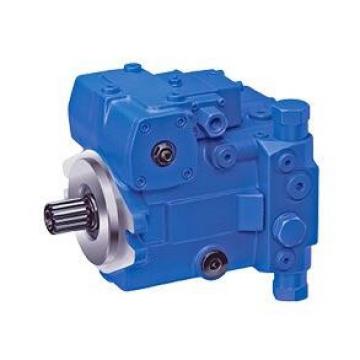 Japan Dakin original pump V50A1RX-20
Japan Dakin original pump V50A1RX-20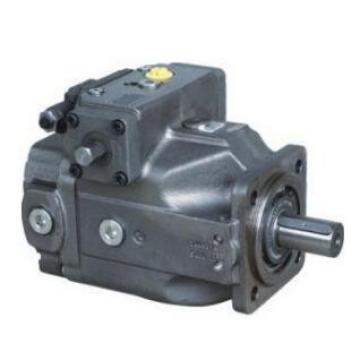 USA VICKERS Pump PVM131EL09ES02AAC07200000A0A
USA VICKERS Pump PVM131EL09ES02AAC07200000A0A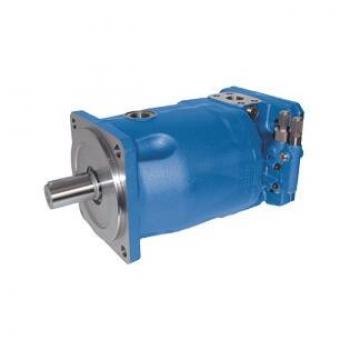 USA VICKERS Pump PVM074ER09GS02AAA28000000A0A
USA VICKERS Pump PVM074ER09GS02AAA28000000A0A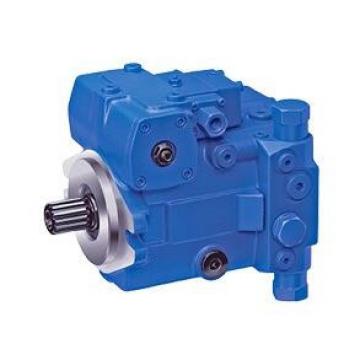 Parker Piston Pump 400481004636 PV180R1L1L2VFPV+PV180R1L
Parker Piston Pump 400481004636 PV180R1L1L2VFPV+PV180R1L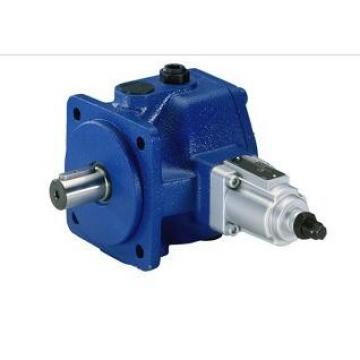 Japan Yuken hydraulic pump A37-F-R-01-B-S-K-32
Japan Yuken hydraulic pump A37-F-R-01-B-S-K-32